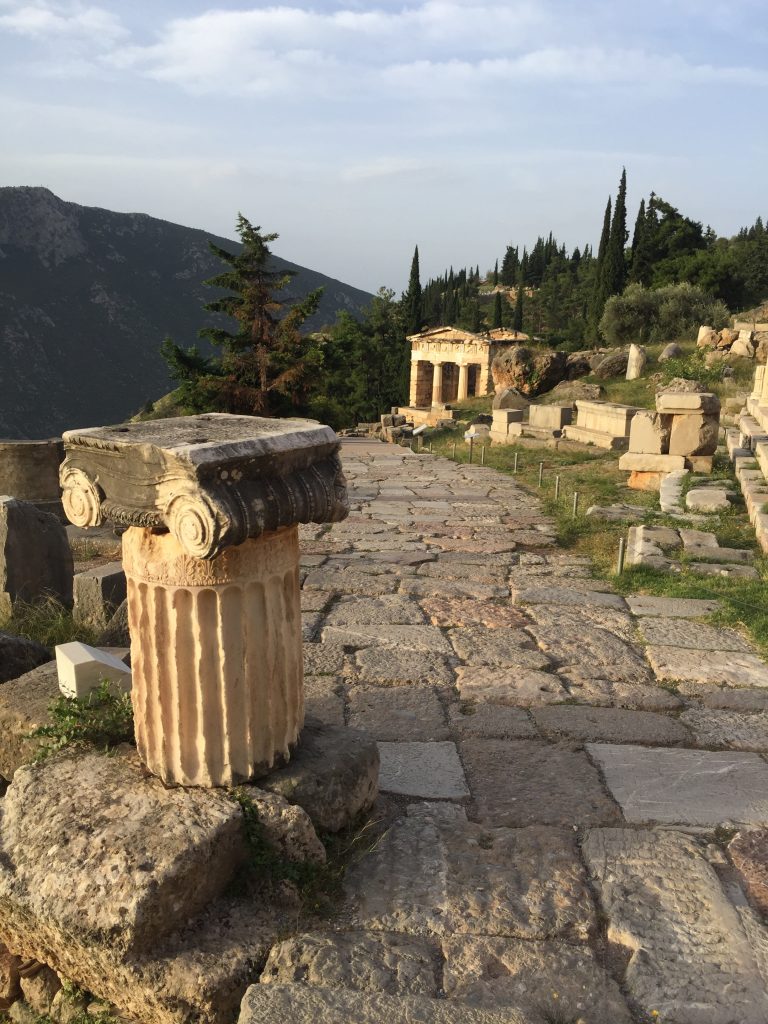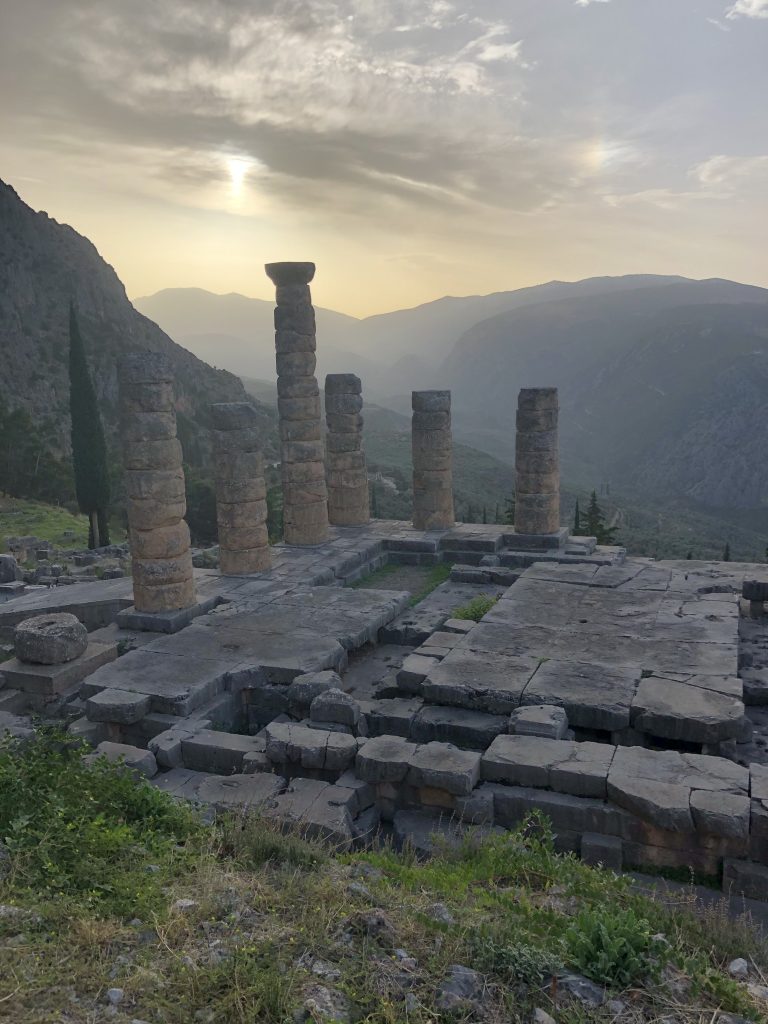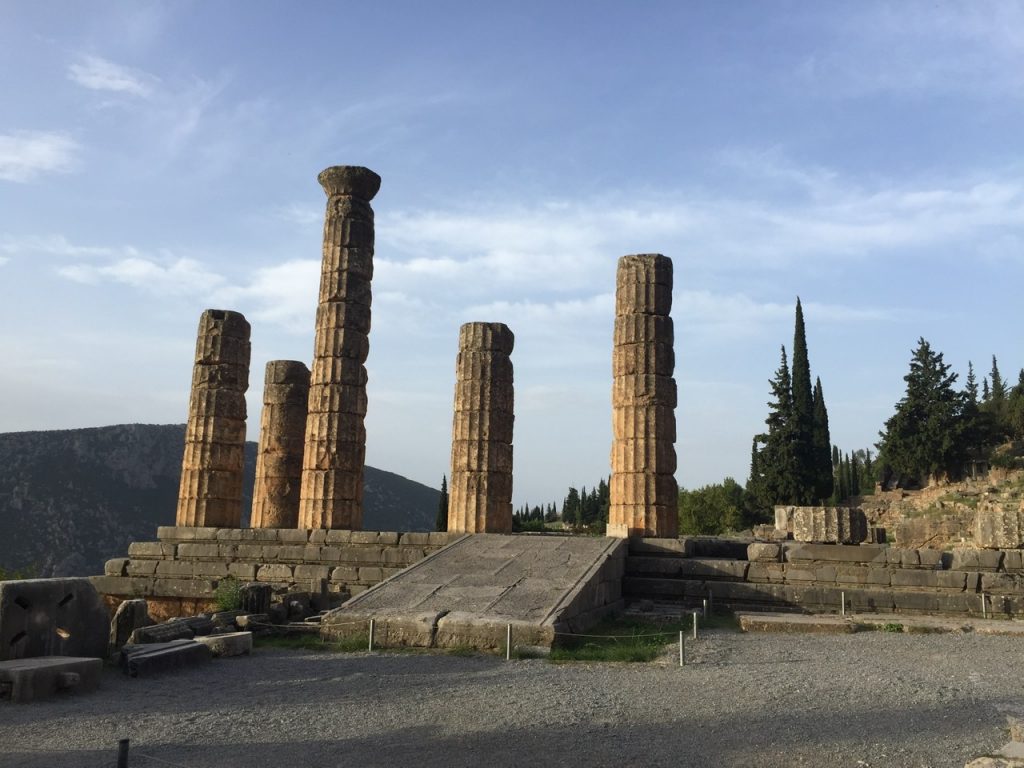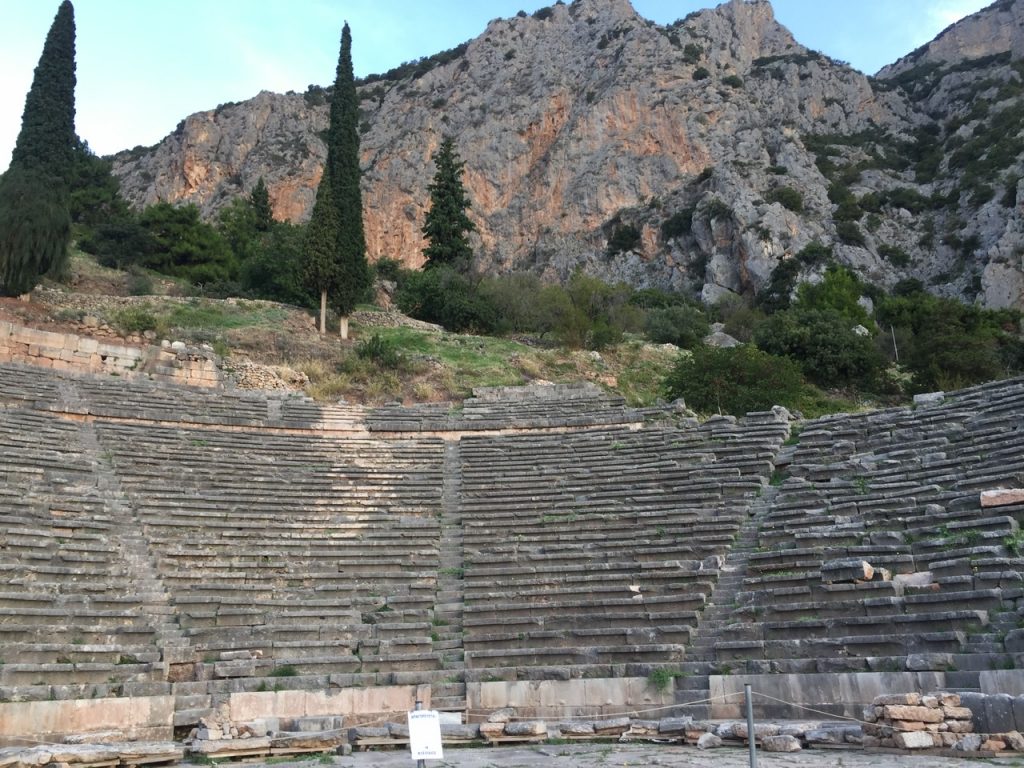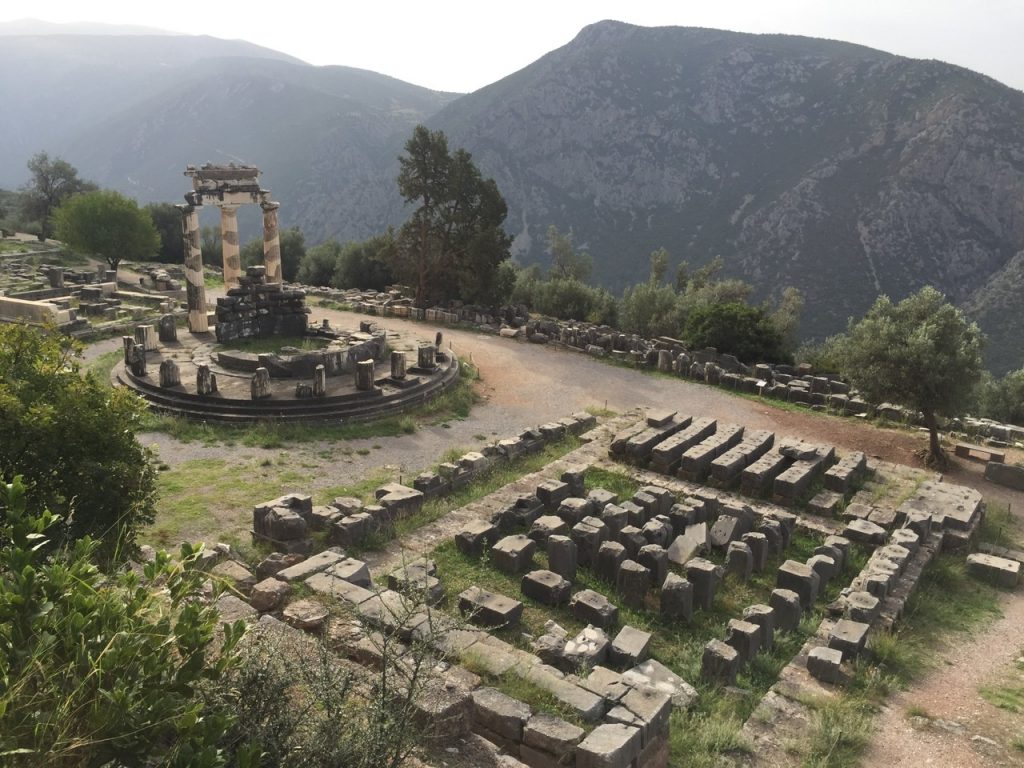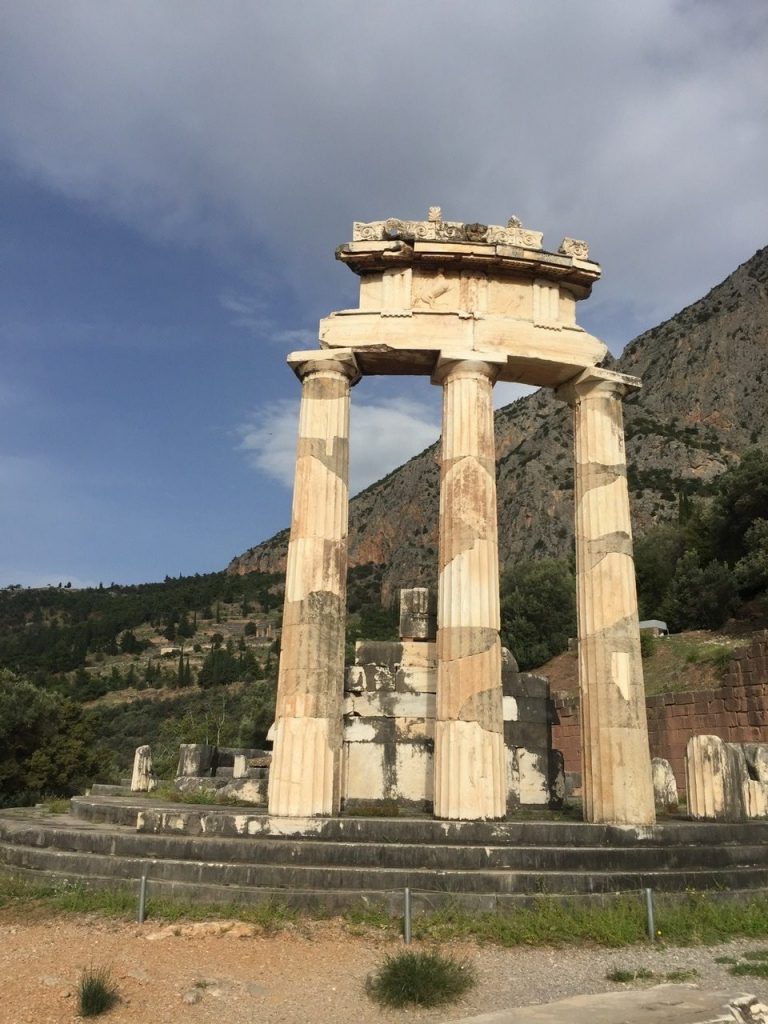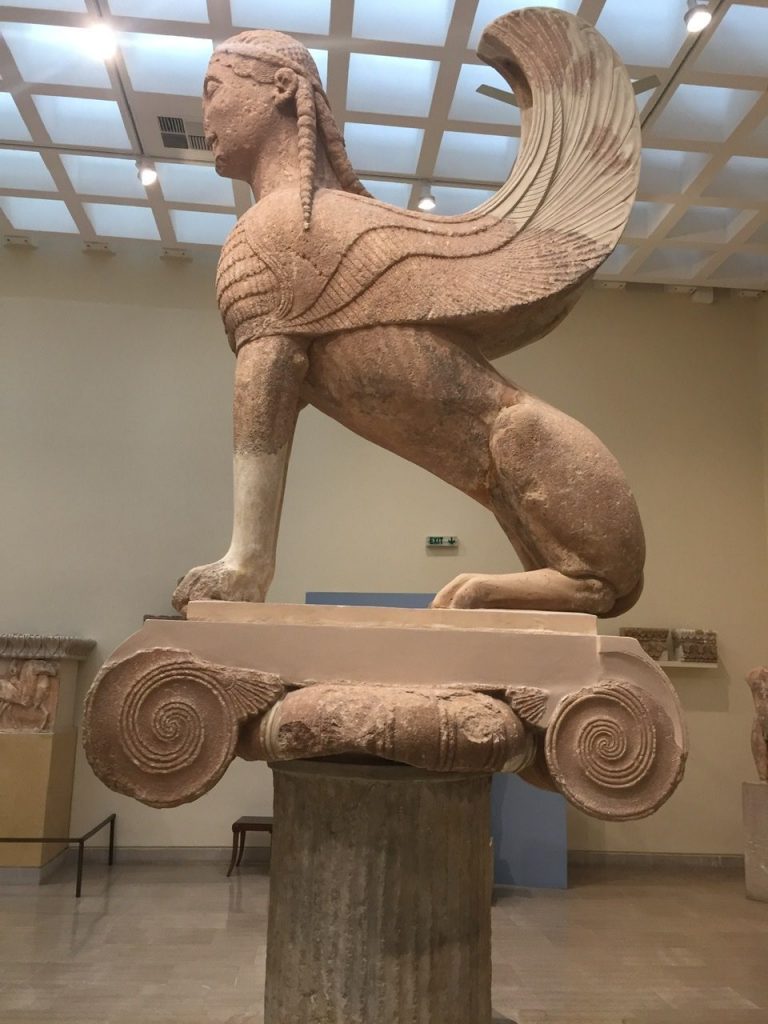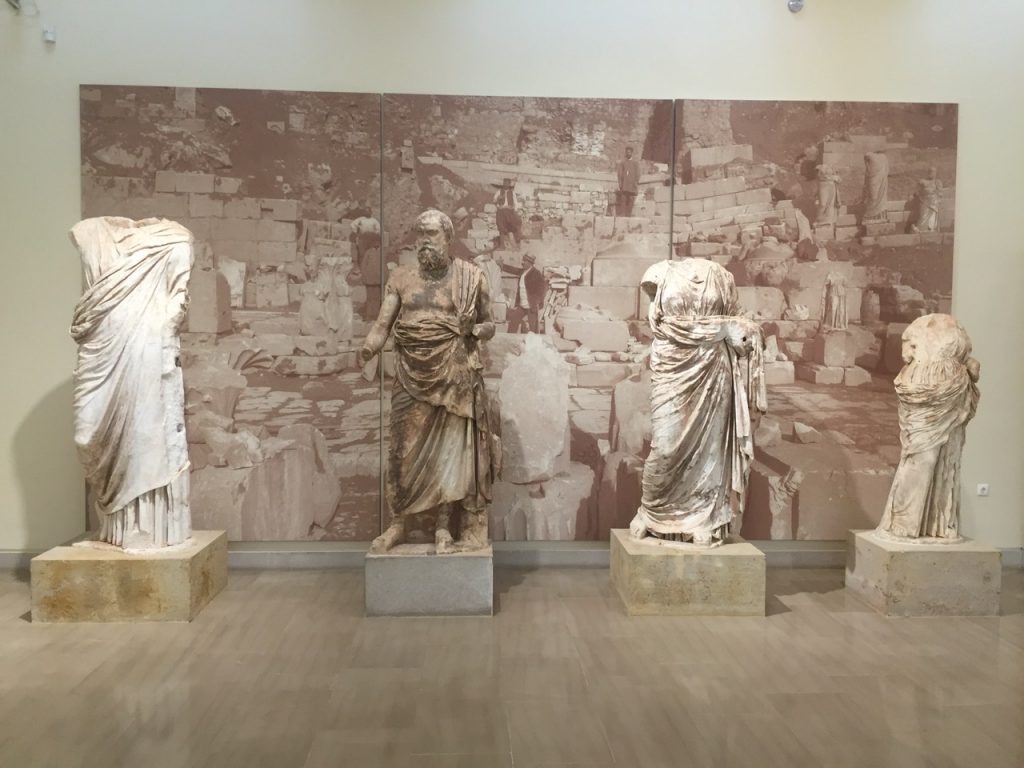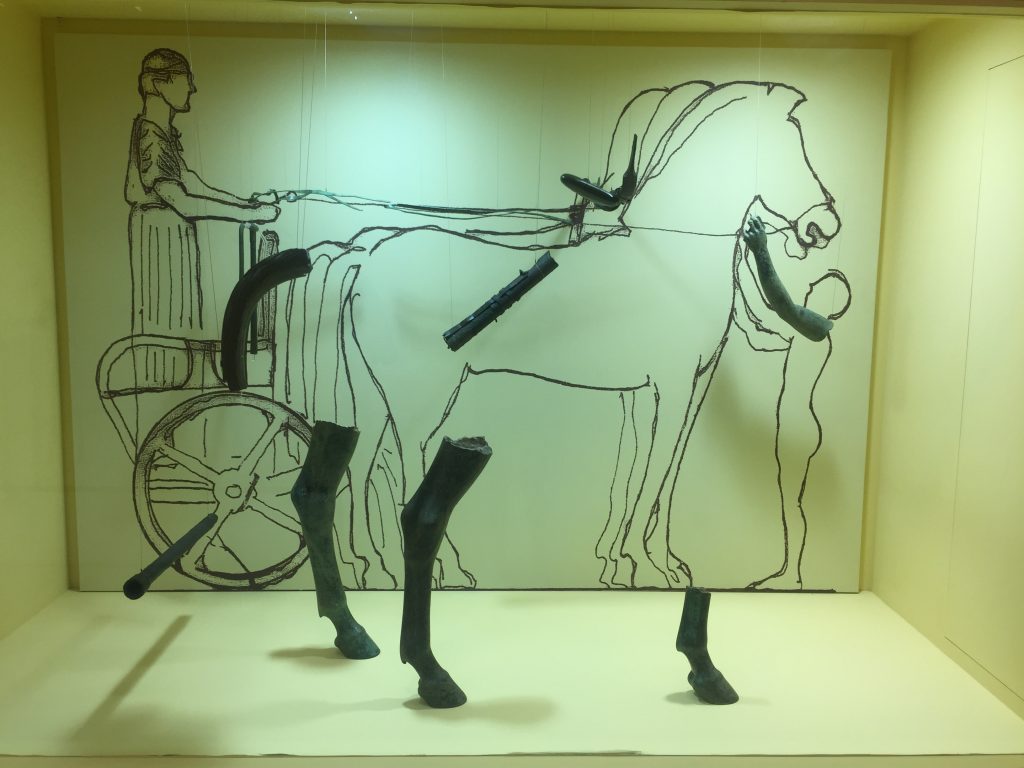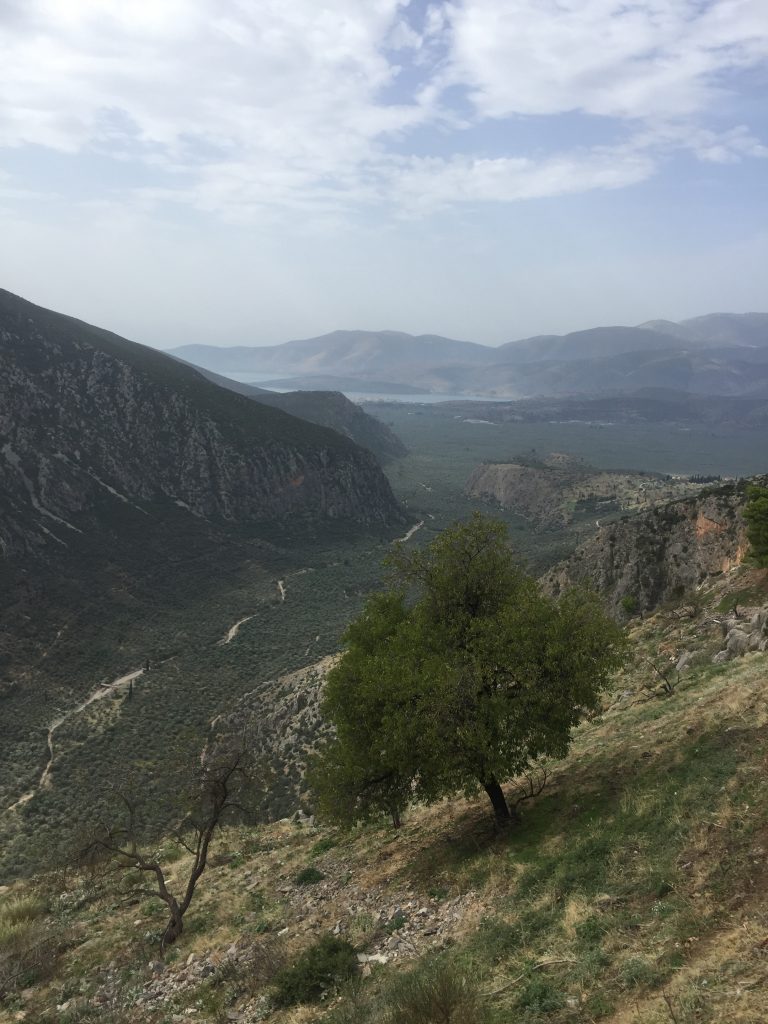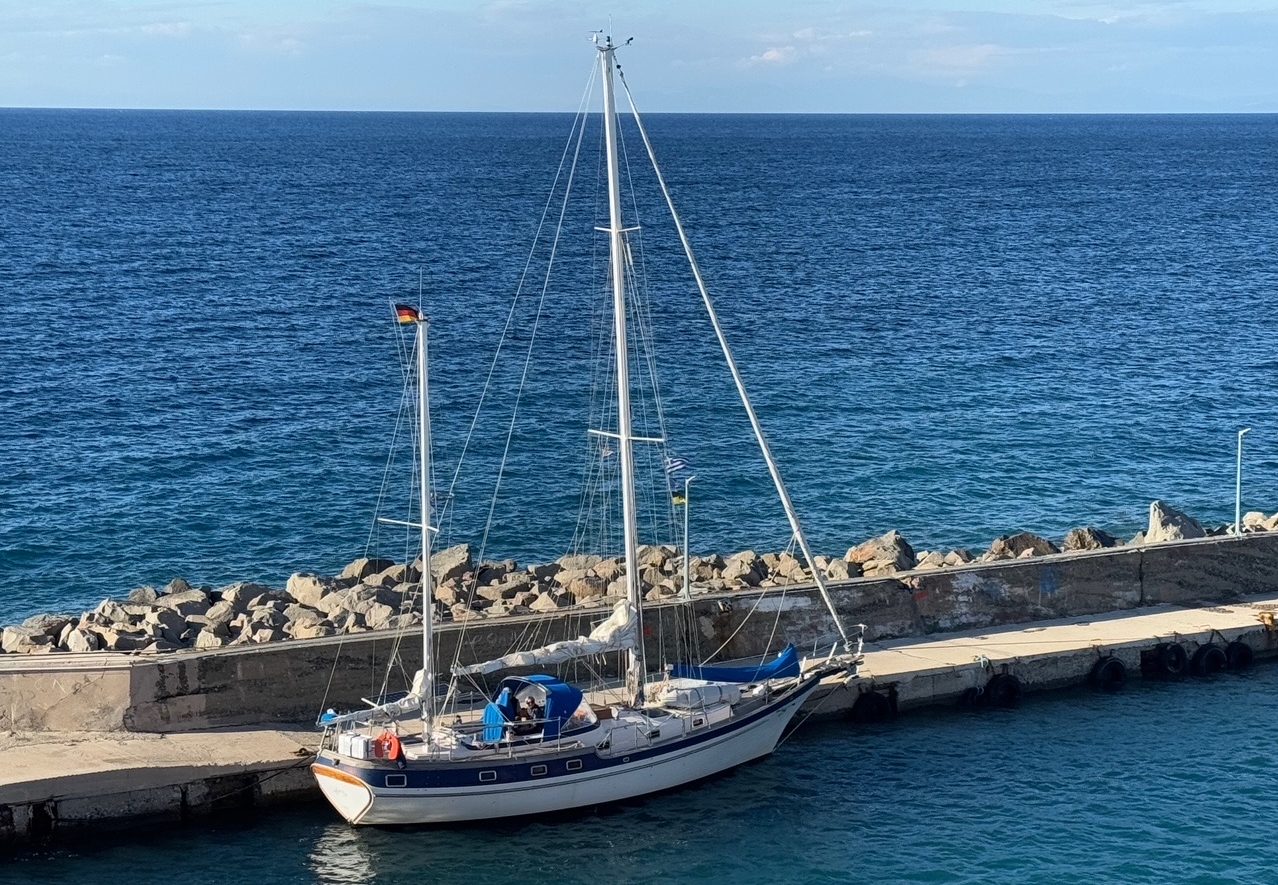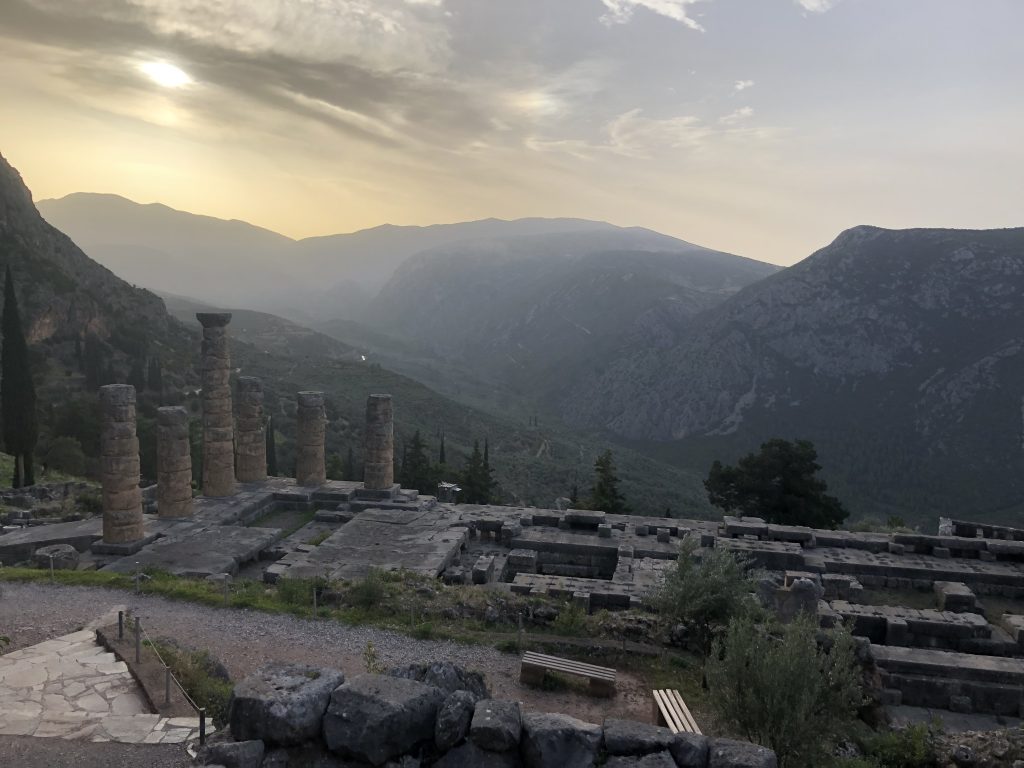
The bus from Itea, where we fixed our boat, to Delphi leaves at 7.15 am - no idea when we got up so early the last time…….But so we hat sunrise in Delphi, which was a bit leaden-covered, but very atmospheric.
First the bus Gomes a few kilometres through the fertile plain at the foot of the Parnassos mountains, olive trees as far as the eye can see. Then it spirals up 10 km into the mountains in breathtaking hairpin bends and steep climbs. Vertical cliffs, rugged karstified rocks, impressive.
The sanctuary of Apollo is located on a terrace directly in front of a huge rock face, the temples and the buildings are so to speak glued to the rocks, unbelievable. And in a tremendous density, a whole city high above the plain, behind it naked vertical rock, in front of it as well.
At its heyday in the 5th/4th century Delphi was considered the navel of the world: it was the centre of the then known world between Italy and the western Mediterranean and the Levant as far as Asia Minor and Armenia. Before that, however, the known world went much further east, in Mycenaean times and even afterwards, new materials, new techniques and new forms in the fine arts and crafts came here through trade, they were imitated and processed in temple buildings - cultural fermentation, as in Mycenae.
The Greek cities and city-states offered their rich offerings here, there was a small temple for each city/state where the gifts were stored. Every four years the Pythian Games took place here, one year before the Olympic Games, a religious and sporting event that gathered all the Greek tribes.
Of course, the different epochs shaped the buildings, the stadium, built unbelievably high on the mountainside, did not have stone seating stands From the beginning, the Romans built them first. Directly below the stadium the amphitheatre with a gigantic view over the mountains to the sea.
Below the huge complex is the sanctuary of Athena Pronaia, where the goddess of wisdom, fertility and health was worshipped.
At the entrance to the temple area there is an archaeological museum with hundreds of exhibits, some of which are known from history books. Here again, the various influences of the Mediterranean are very interesting and impressive, for example the column, which was a donation from Naxos, bears an Egyptian sphinx.
We will not reveal what we asked the oracle about. But we do know that if the question is asked wisely, you can often find the answer yourself.
Delphi - a unique experience.
